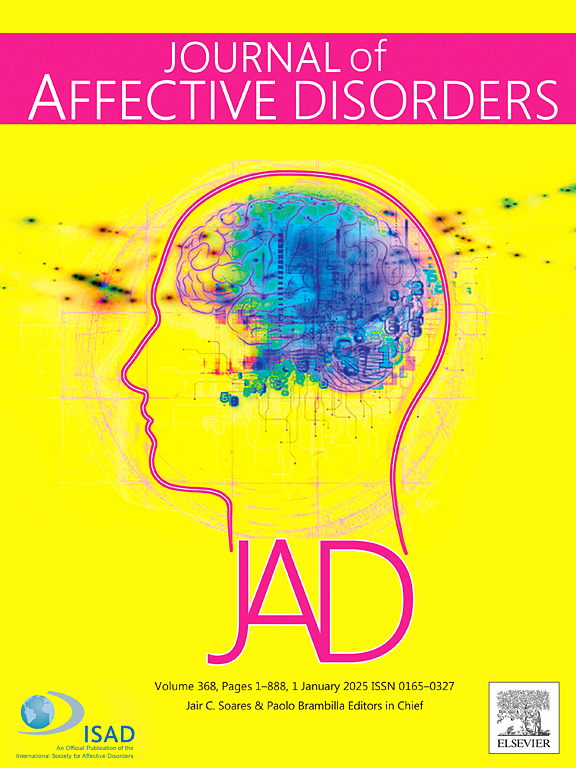Synergistic effects of a body shape index and depression on mortality in individuals with low sexual frequency
IF 4.9
2区 医学
Q1 CLINICAL NEUROLOGY
引用次数: 0
Abstract
Background
Individuals with low sexual frequency often experience comorbidities that exacerbate mortality. This article evaluates the predictive value of five body fat anthropometric indicators for all-cause mortality and explores the interaction between obesity and depression in mortality among young and middle-aged individuals with sexual frequency <12 times per year.
Methods
This study included participants with a sexual frequency of <12 times per year from the 2015–2016 National Health and Nutrition Examination Survey (NHANES). We assessed the impact of anthropometric indicators and depression on mortality, as well as their synergistic interactions, and further developed an accessible predictive survival model.
Results
A total of 4978 participants aged 20–59 were included, with 215 deaths (4.3 %) over 15 years of follow-up. A Body Shape Index (ABSI) showed the strongest association with all-cause mortality, with an AUC of 0.67. Participants with ABSI ≥0.082 had a significantly higher risk of death (HR: 1.87, 95%CI: 1.31–2.68), as did those with depression (HR: 1.86, 95%CI: 1.19–2.92). Interaction analysis revealed a synergistic effect between depression and ABSI, increasing death risk by 293 % when both were present. Significant survival differences were observed between men and women with these risk factors, with median survival rates of 76.3 % and 90.8 %, respectively. The model based on ABSI and depression provided valuable mortality predictions, with AUC of 0.78, 0.77, and 0.77 for 3-year, 5-year, and 10-year survival.
Conclusion
ABSI and depression are associated with all-cause mortality in individuals with low sexual frequency, potentially creating a synergistic effect on mortality risk.
求助全文
约1分钟内获得全文
求助全文
来源期刊

Journal of affective disorders
医学-精神病学
CiteScore
10.90
自引率
6.10%
发文量
1319
审稿时长
9.3 weeks
期刊介绍:
The Journal of Affective Disorders publishes papers concerned with affective disorders in the widest sense: depression, mania, mood spectrum, emotions and personality, anxiety and stress. It is interdisciplinary and aims to bring together different approaches for a diverse readership. Top quality papers will be accepted dealing with any aspect of affective disorders, including neuroimaging, cognitive neurosciences, genetics, molecular biology, experimental and clinical neurosciences, pharmacology, neuroimmunoendocrinology, intervention and treatment trials.
 求助内容:
求助内容: 应助结果提醒方式:
应助结果提醒方式:


